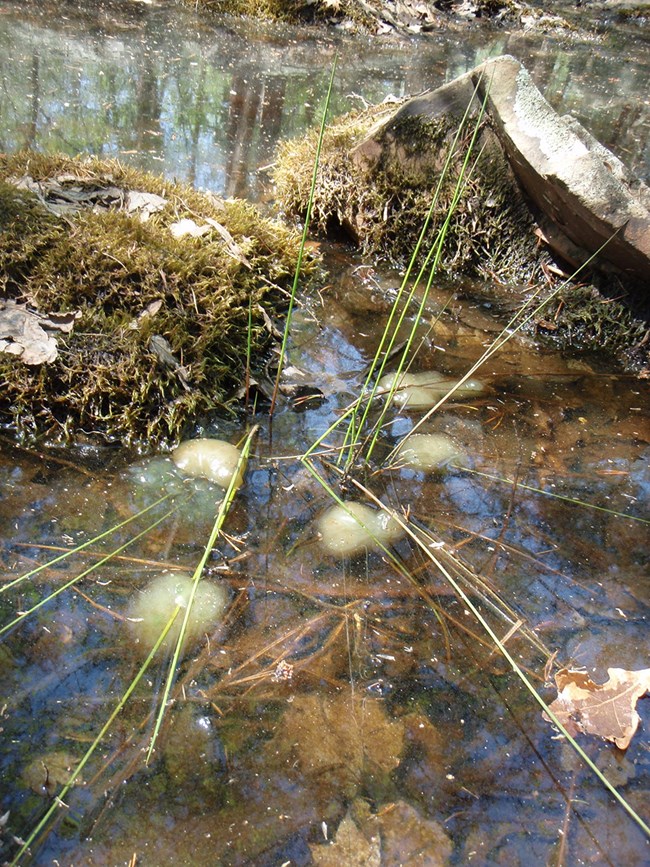Last updated: September 26, 2025
Article
Amphibians in the Potomac Gorge
The Potomac Gorge, in the Chesapeake & Ohio Canal National Historical Park, is home to a rich diversity of amphibian life. The streams and seasonal pools of the gorge provide habitat for frogs and salamanders that changes from year to year with the amount and timing of rainfall.
Rain Matters

NPS/Nortrup
Rich Habitat
The C&O Canal’s Potomac Gorge area is rich with a wide variety of frogs and salamanders. From wood frogs and red-spotted newts to marbled salamanders and toads, these amphibians are part of what makes the Potomac Gorge (the area around Great Falls) a unique and treasured place.
To help protect these creatures, National Park Service staff from the Inventory & Monitoring (I&M) program monitor amphibians in pools and streams every year to see how populations are moving and changing.
Species Dispersal

NPS
And over that time, each species has showed some degree of decline in the number of wetlands they occupy. Some species, like green frog (Lithobates clamitans) have had steeper declines than others, like spotted salamander (Ambystoma maculatum).
In 2013 however, several species with longer breeding or larval periods got a boost from above average summer rains and were able to expand the number of pools they occupied. These include American bullfrogs (Lithobates catesbeianus), green frogs (Lithobates clamitans), and gray treefrogs (Hyla versicolor).
Pool Party
Each wetland site hosts a different suite of species based on factors including the amount of time it stays wet (hydroperiod) and how far it is from other wetlands. Most wetlands in the Potomac Gorge (214 of 274), are not wet year round. That means they’re more vulnerable to changes in climate.Temporary wetlands however, although they tend to have fewer species, support some species not found in more permanent wetlands. As a result, the areas of the gorge with the highest species richness occur where wetlands of different hydroperiods are clustered.
In 2013, I&M monitored 33 wetlands between milepost 3 and 16 four times during the year.
Stable Stream Salamanders
I&M scientists also monitor salamanders at sites along 5 streams that flow into the Potomac River through the gorge.In 2013, we encountered four species of salamanders: northern dusky salamander (Desmognathus fuscus), northern two-lined salamander (Eurycea bislineata), long-tailed salamander (Eurycea longicauda), and northern red salamander (Pseudotriton ruber).
These stream salamanders have levels of occupancy that are relatively stable. However, stream drying in recent years has decreased our ability to detect some species, even though populations may remain unchanged.
Learn More
To help protect natural resources ranging from amphibian populations to forest health to water quality, the National Park Service has a staff of scientists who do Inventory & Monitoring (I&M) work in parks across the country. The National Capital Region Network, Inventory & Monitoring program (NCRN I&M) serves national parks in the greater Washington, DC area.Discover more about amphibians in the Potomac Gorge at the NCRN amphibian monitoring webpage.
